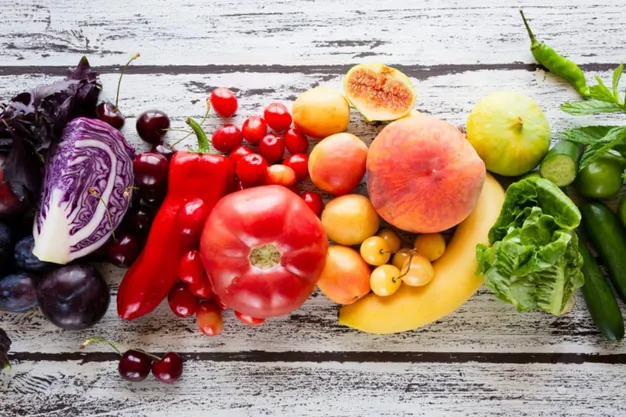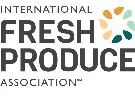The headline is eye-catching: “Prescription for fruits, vegetables linked to better heart health, food security” regarding a study in August in the Circulation: Cardiovascular Quality and Outcomes journal.
Indeed, talk of produce prescriptions looks to be increasing among the healthcare community--but what should the produce industry know about them?
To start, what are produce prescriptions exactly? According to the International Fresh Produce Association (IFPA), which developed the definition as part of its work with the National Produce Prescription Collaborative, a Produce Prescription Program (PRx) is “a medical treatment or preventative service for eligible patients due to diet-related health risks or conditions, food insecurity, or other documented challenges in access to nutritious foods, and are referred by a health care provider or health insurance plan.”
The prescriptions are fulfilled through food retail and let patients access produce (without added fats, sugar, or salt) at low or no cost to patients. The intention? To improve a patient’s health care outcomes as well as, according to the definition, optimize medical spending. “It’s treating fruits and vegetables as you would a pharmaceutical meaning your doctor prescribes you with a fruit or vegetable benefit,” says Mollie Van Lieu, vice president, nutrition and health policy for the IFPA.

Accessing the prescription
Redeeming the prescription at retail would usually be done via a debit card. “It’s how you access fruit or vegetables any other way but it’s about who’s paying for it which would be the health care system,” says Van Lieu.
These prescriptions also are not intended to supplant pharmaceutical prescriptions. “Typically because it’s given to someone who has or is at risk for diet-related diseases such as high blood pressure or diabetes, often those patients are also receiving a pharmaceutical so it would be with that.” The combined hope is for patients to get off of pharmaceuticals if possible and Van Lieu says sometimes the pharmaceuticals work better when the patient is eating a diet prescribed with produce.
When prescribed, it’s also not as if a physician prescribes a patient to eat, say two cups of blueberries a week for the antioxidants. “In most cases, just consuming more fruits and vegetables regardless of what the specific commodity is, is going to be helpful. In general, a produce prescription is just for fruits and vegetables,” says Van Lieu. “It’s very much a relationship between the physician and patient and also in some cases a registered dietitian is paired with the patient who may be able to provide more prescriptive advice on specific fruits and vegetables.”
National system needed In terms of the adoption rate, produce prescriptions vary largely from state to state given there’s no national adoption of a program, though there have been thousands of pilot projects of the concept.
In terms of the adoption rate, produce prescriptions vary largely from state to state given there’s no national adoption of a program, though there have been thousands of pilot projects of the concept.
Meanwhile, the IFPA is pushing for a federal policy change that would make produce prescriptions reimbursable under Medicare. A year ago, the federal Department of Health and Human Services did say that for states that wanted to cover them as part of their Medicaid health care programs, they could do that and a handful of states are now seeing good uptake of the idea.
“You still have to have all of the pieces together even though it’s allowed in all states. So they have to have the retail partner or however they’re choosing to distribute it,” says Van Lieu. For example, in Orange County, California, there’s a direct ship box of items. Or in North Carolina, patients receive a debit card for fruits and vegetables redeemable at any Food Lion. “It’s a relatively modest benefit of $40 a month but the data shows that participants are spending $80 a month on fruits and vegetables,” she adds. Leading states adopting the concept include California, Massachusetts, North Carolina and Oregon.
Impact on industry
However proponents of produce prescriptions, including the IFPA, say more industry support is needed. “We’re on the cusp of this being big if we take advantage of this moment,” says Van Lieu. “We would love to see growers, shippers and wholesalers be engaged at the state level to get their specific state to get Medicaid 1115 waivers for the demonstration pilots. The early evidence suggests that this is working. We have other data sets from pilots but we still need the right data to make the case to the broader healthcare system, which is largely programmed to operate in pharmaceutical interventions.” (Van Lieu also adds that pilot programs have recently started with the Veterans Affairs Health Care and Indian Health Service.)
Ultimately, the industry benefit is about growing the consumption of produce. “We’ve seen pockets of success in increasing produce consumption but we haven’t seen success in truly increasing the volume of produce consumption,” she says. “So when you overlay the diet-related disease in our country in terms of people who would be eligible for an intervention like this, you could see significant gains. Medicare covers 65 million Americans. From our calculations, about 30 million Medicare participants would be eligible for produce prescriptions. If you would just get $40 a month to those 30 million people, that’s $14.4 billion annually in fruits and vegetables.”
 For more information:
For more information:
Siobhan May
IFPA
Tel.: +1 (302) 781-5855
[email protected]
www.freshproduce.co
